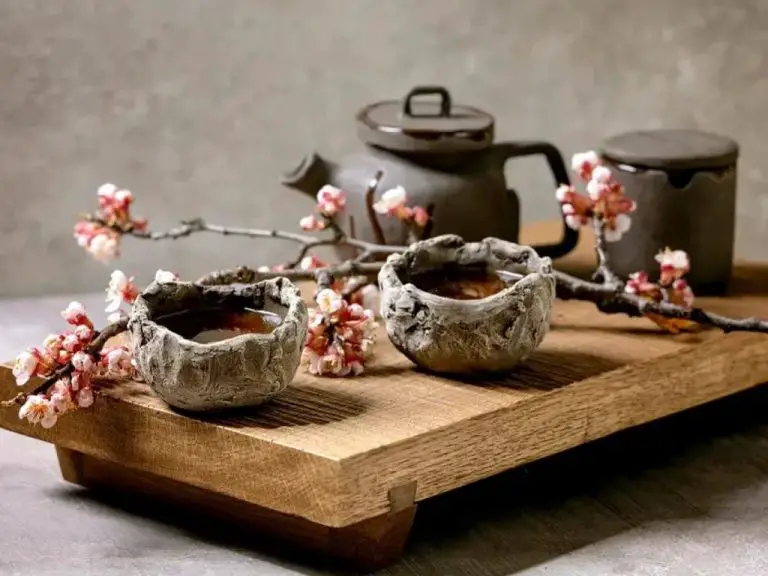What Is The Best Fabric For Lamp Shades?
Lampshades play an important role in controlling and directing light. By covering the light bulb, lampshades diffuse and soften the light, which helps reduce glare. This makes the light more pleasing and comfortable for the eyes. Lampshades also prevent the bulb from being seen directly, hiding the bright light source.
In addition to functionality, lampshades have become increasingly popular as decorative elements. Stylish lampshades can complement a room’s décor and add visual interest. From bold patterns to muted solids, lampshades are available in a diverse range of fabrics, materials, shapes and colors. More people are opting for thoughtfully designed lampshades that make a statement rather than basic utilitarian shades.
Functionality
The functionality of a lamp shade fabric refers to how well it performs its basic lighting functions. Some key considerations include:
Lighting direction/spread: The fabric can influence how widely or narrowly the light is distributed. Sheer fabrics like linen or silk allow light to pass through and spread softly, while opaque fabrics like cotton direct light downwards more focused. The weave or texture impacts spread as well.
Durability: More durable fabrics like cotton, polyester and blended materials will retain their shape and withstand cleaning better than delicate silks or linens. However, natural fabrics often look more attractive over time as they age.
Shape retention: Lampshade fabrics need to hold their shape well when attached to the frame. Stiffened fabrics like cotton duck stay structured, while softer linens or silks may require additional lining or interfacing for support. The fabric weight and density impacts sturdiness.
Overall, cotton and cotton-blend lampshades offer a good balance of light diffusion, durability, and shape retention. But the ideal fabric depends on the desired lighting effect, room aesthetics, and longevity needs. Proper lining and construction also helps any fabric perform its functional role effectively.
Aesthetics
The aesthetics of a lamp shade play an important role in determining the best fabric choice. Factors like color, texture, and pattern all contribute to the overall visual appeal.
Color is one of the most obvious aesthetic considerations. The shade’s color should coordinate well with the room’s existing decor. Neutral shades like white, beige or grey blend in easily, while bold colors make more of a statement. The shade can match other accents in the room or provide a pop of contrasting color. According to www.coohom.com/article/designing-your-home-with-style-and-functionality-5580, the hue and intensity of the lamp’s light will also interact with the shade’s color.
The texture of the fabric affects the look and feel. Smooth, silky fabrics give a soft, elegant look. Textured fabrics like linen or burlap have a more rustic, casual vibe. Embossed patterns add visual interest. The texture impacts how light diffuses through the shade as well.
Patterns on the shade range from subtle stripes to bold graphic prints. Florals and geometrics are both popular options. The pattern scale should suit the proportions of the shade. Smaller lamps look best with smaller scale prints. Large patterned shades can overwhelm a small lamp. The pattern should align and repeat properly when assembled onto the shade frame.
Common Materials
Lampshades are commonly made from a variety of materials including fabric, paper, plastic, and glass. Each material has its own advantages and disadvantages.
Fabric lampshades are very popular and come in materials like cotton, linen, silk, or synthetic blends. Fabrics provide a soft glow and an attractive draped effect. Cotton is affordable, durable, and easy to clean (Source 1). Linen has a natural crispness that creates structure. Silk has a luxurious look and feel. The main drawback of fabrics is that they can be prone to fading or discoloration over time.
Paper lampshades are lightweight and inexpensive. However, paper shades don’t diffuse light as well as fabric. They are also flammable so caution must be used. Parchment paper shades offer an attractive translucent glow. Rice paper shades provide a soft ambient lighting effect. The thinness of paper shades means they are easily damaged.
Other common lampshade materials include plastic, raffia, wood veneer, stained glass, Tiffany-style glass, and metals like copper or aluminum. Plastics like polycarbonate are extremely durable but don’t have an attractive effect. Natural materials like wood or woven grasses can provide interesting textures and patterns.
Fabric Properties
When choosing a fabric for lampshades, three key properties to consider are density, translucence, and fire safety.

Density refers to how tightly woven the fabric is. Tighter weaves are recommended for lampshades, as they will be more opaque and prevent light leakage. Silk and cotton tend to be more densely woven. Loosely woven fabrics like lace allow more light to pass through, creating glare.
Translucence determines how much light shines through the fabric. Opaque fabrics block all light, while sheers allow some light to pass through. Most lampshades use semi-opaque fabrics that diffuse and soften light. Cotton, linen, and silk offer a good level of translucence for ambient lighting.
Fire safety is crucial for lampshades surrounding a lightbulb. Natural fabrics like cotton and linen are flame retardant. Synthetics like polyester can melt and burn. The safest options are cotton, linen, or treated fabrics that resist burning. Always check that the fabric meets safety standards.
Considering density, translucence and fire safety will ensure your shade fabric provides both aesthetic appeal and functionality.
Texture
The texture of the lamp shade fabric plays a big role in how the light is diffused and spread throughout the room. Lamp shades can have smooth fabrics like silk or satin, or rougher fabrics like linen, burlap, or cotton.
Smooth fabrics like silk tend to diffuse the light more evenly and create a soft glow. The light passes through smoothly and provides even, ambient lighting. Smooth fabrics work well for lamp shades in living rooms, bedrooms, and other relaxing spaces where you want a gentle lighting ambiance.
Rougher fabrics like burlap or linen have more variation in the weave and surface. This can cause the light to reflect off the fabric in a more scattered way. Rough textures work well for a more playful, rustic or casual decor. The shadows and variations in the lighting can be desirable in spaces like family rooms, kids’ rooms or craft nooks. Just take care that the fabric isn’t so rough that it glares or overly obscures the light source.
Patterns
The size and type of pattern on a lampshade fabric can significantly affect the ambiance of a room. Smaller, more intricate patterns tend to create a cozier feel, while large bold patterns make more of an impact and statement (source). Subtle patterns like florals or geometrics in muted tones are ideal for traditional decor and add a touch of elegance. These tend to diffuse the light for soft, ambient illumination. Bold graphic prints or large florals in contrasting colors have a more striking, contemporary look. They grab attention and cast distinctive light patterns into the room (source).
When selecting a patterned lampshade, consider the room’s existing decor. A small-scale pattern can complement ornate furniture and busy surroundings. Large prints stand out better against plain backgrounds. The color scheme is also important – choose patterns with colors that unite everything in the space for visual harmony. Coordinate patterns on lampshades with patterns used elsewhere in the room, like on upholstery or wallpaper (source). Most importantly, choose a pattern you find visually appealing to create an interior you’ll love spending time in.
Shape
The shape of a lampshade has an important effect on both the look and function of the lamp. Common lampshade shapes include drum, empire, bell, and rectangle. When selecting fabric, it’s important to consider the lampshade’s shape and size in relation to the lamp base and room decor.
For a drum, empire, or bell-shaped shade, fabrics that have some stiffness and structure work best to hold the shade’s shape. Soft, limp fabrics can appear wrinkled or saggy on these curvier shapes. Structured fabrics like cotton duck, linen, or blended fabrics with polyester will hold the rounded shape better. For a rectangular or oval lampshade, softer fabrics like silk can drape nicely on the straight edges.
The shade’s proportions in size and shape should relate well to the lamp base and overall style. For example, a small bell-shaped shade balances nicely on a round table lamp base. Check any formulas or calculators to get the correctly scaled shade size and shape for the lamp. A lampshade that is out of proportion will look awkward and be less effective.
When selecting fabric based on shade shape, consider textures or patterns that will complement the silhouette. Bold stripes or large florals can overwhelm a petite bell-shaped shade, while they suit a large drum shade. Make sure the fabric’s style and print combine attractively with the form of the shade for a coordinated look.
Color
The color of a lamp shade can significantly affect the ambiance and functionality of the light. Choosing the right color shade is an important design decision.
For example, light colors like white or beige will allow more light to pass through, creating a bright, vibrant effect. This can help illuminate a dark room. Whereas dark colors like black or brown will block more light, creating a warmer, more muted ambiance. This may be preferable for bedrooms or living rooms where a softer lighting effect is desired.
The color of the shade should also complement the room’s existing decor. Warm earth tones like tan or terracotta can accentuate a Southwest or rustic decor. Cool tones like light blue may suit a beach cottage. Bold and bright colors can be used as an accent in a modern or eclectic space.
Shades in the same color family as the walls will blend in, while contrasting shades will stand out as more of a decorative focal point. Metallic sheens like gold, silver or copper can add a touch of glamour.
Overall, the color of a lamp shade has a significant impact on both the utility and decor of lighting. Carefully choosing a shade that aligns with the room’s ambiance and design is key to achieving the perfect lighting effect.
Sources:
[What Color Lamp Shade To Choose? 5 Things to Consider | Lampshade Solution](https://www.lampshadesolution.com/blogs/news/choosing-the-right-color-of-shade-for-your-lamp)
Conclusion
In summary, the best fabric for lamp shades depends on your priorities – whether you care more about functionality, aesthetics, or cost. Natural fabrics like linen and cotton are breathable and durable, while synthetics like polyester allow for more texture and pattern options. Sheer fabrics like silk and chiffon create a soft glow, but opaque options like canvas better block light. The shape and size of the lampshade also impact the ideal fabric choice. Ultimately, cotton or cotton blends balance functionality, cost, and attractive draping ability, making them a versatile and recommended option for most lampshade projects.
When selecting lampshade fabric, consider the lighting needs, room decor, and your budget. Test fabric samples before committing to ensure the right amount of glow. With some planning, you can choose a material that both complements your decor and provides the desired ambiance.





